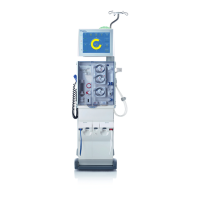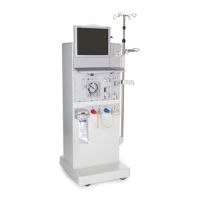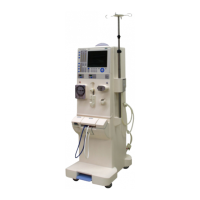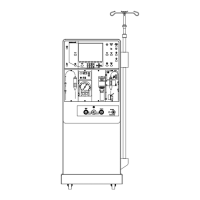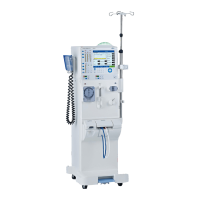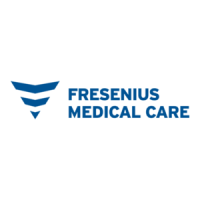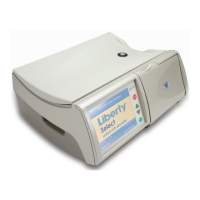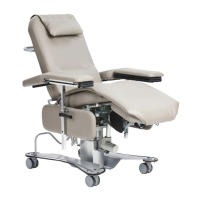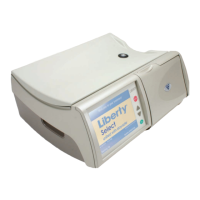Chapter 7: Functional description
7-2 Fresenius Medical Care multiFiltrate IFU-EN-UK 15A-2015
7.2 Description of treatments
7.2.1 Continuous renal replacement therapy
(CRRT = Continuous renal replacement therapy)
Indication The different continuous renal replacement therapies (CRRT) can be
applied if not only volume removal is required but also the removal of
other substances, such as urinary excreted substances (urea and
creatinine). This also applies if electrolyte imbalances or disorders of
the acid-base balance are to be corrected.
Vascular access The CRRT treatments use a venovenous vascular access, i.e., blood is
both removed from and, after treatment, reinfused into a vein of the
patient. Usually, a large-bore central venous double-lumen catheter is
used for the vascular access.
Due to the higher and more stable blood flow, the venovenous CRRT
treatments have gained acceptance in contrast to the arteriovenous
CRRT treatments which were also used in the past.
Types of CRRT Continuous venovenous haemofiltration (CVVH) can be performed as a
predilution procedure (Pre CVVH) or a postdilution procedure (Post
CVVH). A CVVH has to be selected and the infusion of the substitution
fluid has to be determined in predilution or postdilution when setting up
the system.
The haemofiltration can simultaneously be performed in predilution and
postdilution (Pre-Post CVVH). It is also possible to perform a
haemodialysis (CVVHD) as an alternative.
Haemofiltration and haemodialysis can be combined as
haemodiafiltration (CVVHDF). Depending on the infusion site of the
substituate, the therapy is called Predilution CVVHDF or Postdilution
CVVHDF (Pre CVVHDF and Post CVVHDF). A CVVHDF has to be
selected and the infusion of the substitution fluid has to be determined
in predilution or postdilution when setting up the system.
The advantages and the disadvantages of the individual therapies
should be taken into consideration when choosing the continuous renal
replacement therapy for the patient.
Post CVVH Postdilution means that the substituate is not infused into the
extracorporeal blood circuit until after the filter, i.e., after the ultrafiltrate
has been removed. As a consequence, the blood at the filter outlet has
a higher concentration of cells and proteins (haemoconcentration). This
can increase the risk of coagulation in the extracorporeal blood circuit.
For this reason, the filtration fraction (UFR / BPR) should not be more
than 20%. If this limit is exceeded, this will be displayed on the device.
If the haemoconcentration is too high, it can be reduced by increasing
the blood flow or reducing the substitution in postdilution. It is also
possible to select another CRRT treatment as an alternative.
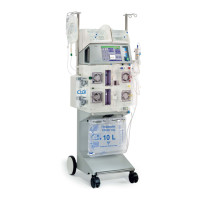
